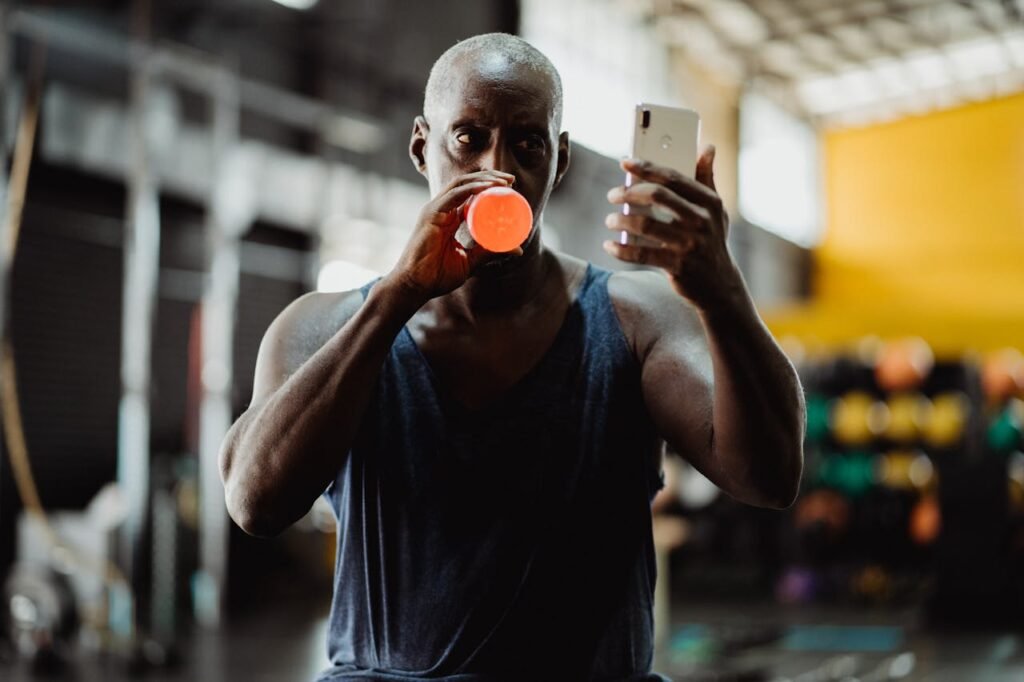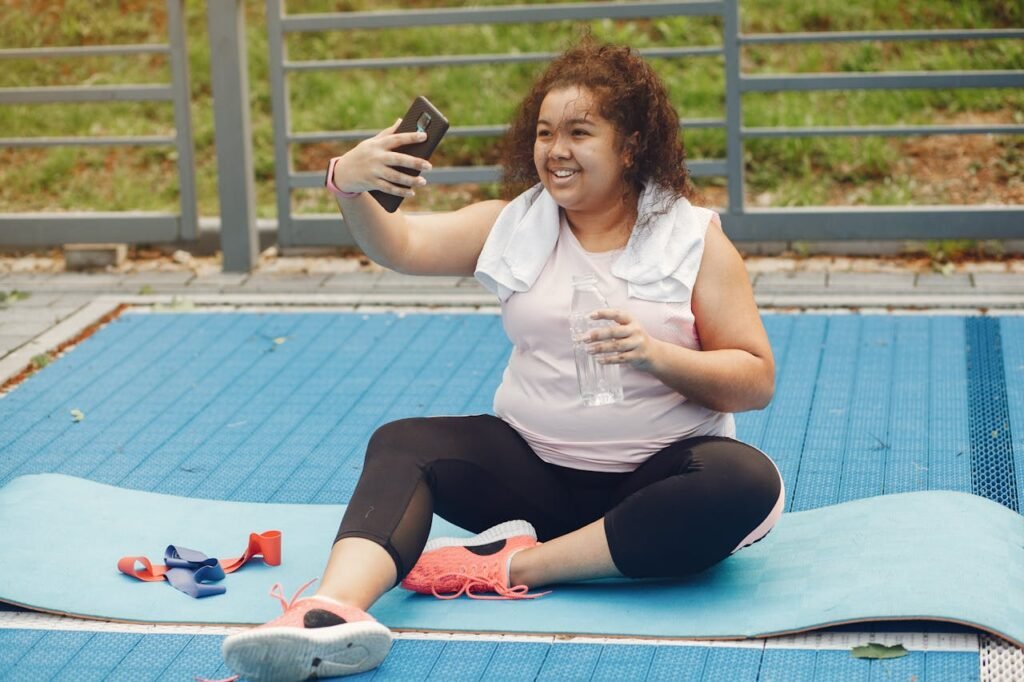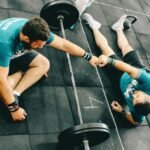Tracking your fitness progress with photos is an excellent way to see tangible results. While scales and measurements provide numerical data, photos offer a visual representation of your journey. They capture changes that might be missed with just numbers.
Progress photos can serve as a powerful motivational tool. They show you the physical changes your body is undergoing. These images can help maintain your focus and commitment to your fitness goals.
Taking and using progress photos effectively requires some planning and consistency. From choosing the right lighting to maintaining the same angles, each step is important. Here’s a guide to help you capture your progress accurately and use these photos to stay motivated.
Choosing the Right Lighting
Lighting plays a crucial role in the quality of your photos. Natural light is the best option. It’s even and doesn’t cast harsh shadows. Take your photos during the day, near a large window if possible. Ensure the light source is in front of you to illuminate your body evenly.
If natural light isn’t available, use artificial lighting. Position the lights to avoid creating shadows. Multiple light sources can help to create an even effect. Overhead lights can cast unflattering shadows, so avoid using them alone.
Angles Matter
Consistency in angles is key to accurately tracking your progress. Decide on a few standard poses. A front shot, a side profile, and a back shot are essential. These angles give a comprehensive view of your body’s changes.
Use a tripod or mark a spot on the floor to ensure your camera is always in the same position. This helps in maintaining consistency in your photos. Place the camera at chest height and ensure it’s level. This prevents distortion and ensures your photos are comparable over time.
Camera Settings and Positioning
A steady camera is crucial for clear progress photos. Use a camera with a self-timer or a smartphone with a tripod. Position the camera at a distance that captures your entire body. Ensure it’s straight and level to avoid any tilting, which can distort the image.
Keep the camera settings consistent. If using a smartphone, avoid using zoom as it can affect the photo quality. A fixed position helps in maintaining uniformity across all your photos. This consistency makes it easier to compare changes over time.

What to Wear
Clothing can significantly impact how your progress is seen in photos. Wear form-fitting clothes to highlight your body shape. Loose or baggy clothing can hide changes in your physique. If comfortable, minimal clothing like shorts and a sports bra work best.
Consistency in clothing is also important. Wear the same outfit or similar attire each time you take your photos. This removes variables and allows for a clearer comparison of your progress over time.
Background and Environment
A plain, uncluttered background ensures that the focus remains on you. A white or neutral-coloured wall is ideal. This background choice eliminates distractions and makes the changes in your body more noticeable.
Ensure the environment remains the same each time you take your photos. Consistency in background and setting adds to the accuracy of your comparisons. If you take your photos in different locations, the variations in lighting and surroundings can affect how your progress is perceived.
Frequency of Photos
Regularly taking progress photos helps in tracking changes effectively. Weekly or bi-weekly intervals are ideal. This frequency allows you to see noticeable changes without feeling discouraged by the slow pace of progress.
Avoid taking photos too frequently. Daily photos can be demotivating as changes are often too subtle to notice. Stick to a regular schedule and be patient. Consistency and time are key to seeing real progress.
Staying Motivated with Photos
Progress photos can be a powerful motivator. They provide visual proof of your hard work. When you feel discouraged, looking back at your earlier photos can boost your morale. Notice the small changes in muscle definition, posture, and overall body composition.
These visual cues remind you of your progress and keep you motivated. Even when the scale doesn’t move, your photos can show significant changes. This can be a more accurate reflection of your efforts and improvements.

Organising Your Photos
Keeping your progress photos organised helps in tracking your journey effectively. Create a dedicated folder on your device for these images. Label each photo with the date it was taken. This makes it easier to track changes over time.
You can also use apps designed for progress tracking. These apps allow you to organise and compare photos easily. Having a systematic approach ensures that you can always refer back to your progress at any point in your fitness journey.
Sharing Your Progress
Sharing your progress photos can provide additional motivation. Positive feedback from friends, family, or fitness communities can boost your morale. However, only share your photos if you’re comfortable. Remember, these images are primarily for your personal tracking.
Social media and fitness forums can be great platforms for sharing. Seeing others’ journeys can also inspire and motivate you. It creates a sense of community and shared goals, which can be incredibly encouraging.
Using Photos for Self-Assessment
Progress photos are a valuable tool for self-assessment. They allow you to objectively see changes in your body. Look for improvements in muscle tone, fat loss, and posture. Compare them side by side every few weeks.
This visual assessment can be more accurate than relying solely on the scale. Photos capture changes that might not reflect in weight. They provide a fuller picture of your progress and help you stay on track.
Combining Photos with Other Tracking Methods
While photos are powerful, combining them with other tracking methods can give a fuller picture of your progress. Use measurements, fitness tests, and body composition analyses alongside your photos. This holistic approach provides a comprehensive view of your fitness journey.
Measurements can show changes that aren’t visible in photos. Fitness tests can track improvements in strength and endurance. Body composition analyses provide detailed insights into fat and muscle percentages. Together, these methods offer a complete picture of your progress.

Handling Plateaus and Setbacks
Progress isn’t always linear. There will be times when it seems slow or stagnant. During these periods, look at your photos for encouragement. Even when the scale doesn’t move, photos may show subtle changes.
Remember that progress isn’t always visible week to week. It’s a long-term journey. Keep documenting and trust the process. Over time, the changes will become more apparent and rewarding.
Tips for Consistent Progress Photos
Here are a few tips to ensure your progress photos are consistent and effective:
- Take photos at the same time of day
- Use the same location and background
- Maintain consistent lighting and angles
- Wear the same clothes or similar attire
- Stay relaxed and natural in your poses
These tips help maintain uniformity in your photos, making it easier to track and compare your progress over time.
Conclusion
Progress photos are a valuable tool in your fitness journey. They provide tangible evidence of your hard work and dedication. By following these tips and best practices, you can take effective progress photos and use them to stay motivated and on track.
Remember, the journey to fitness is a marathon, not a sprint. Keep documenting, keep pushing, and celebrate every step of the way. Your progress photos will serve as a powerful reminder of how far you’ve come and motivate you to achieve even more.





